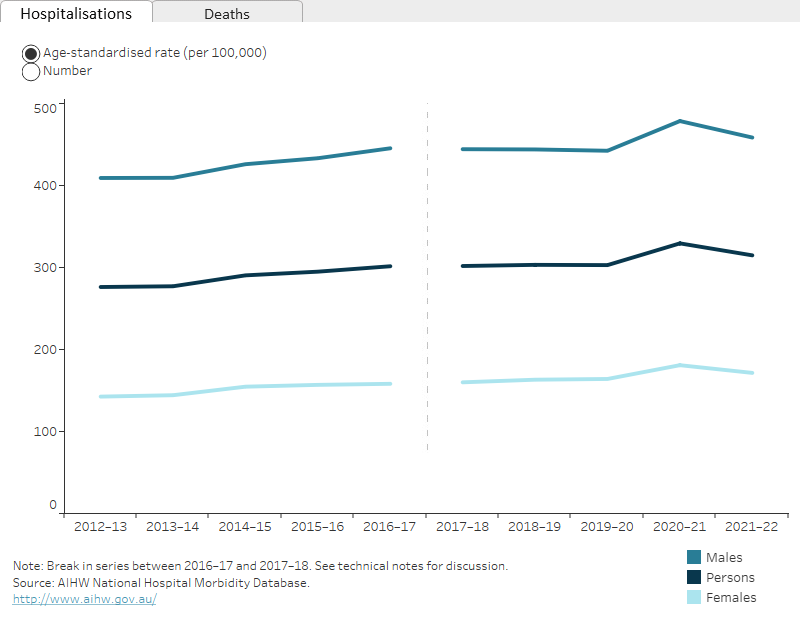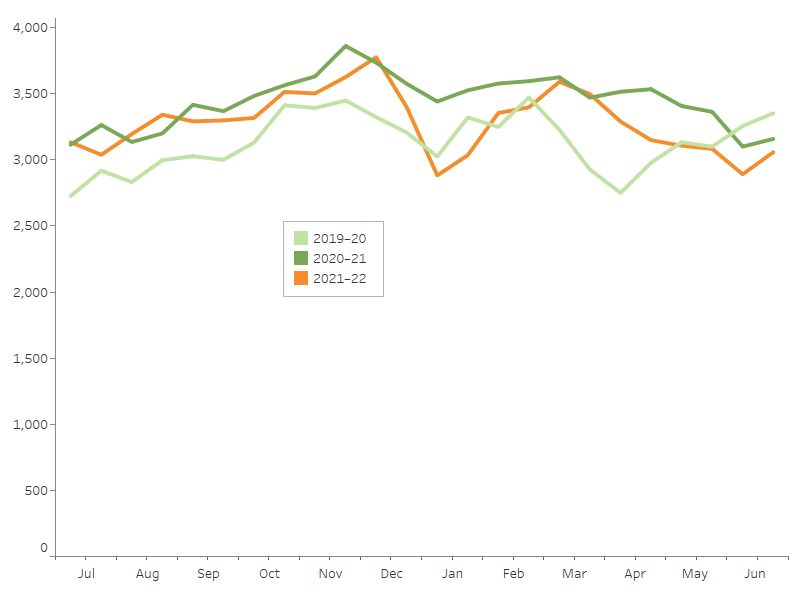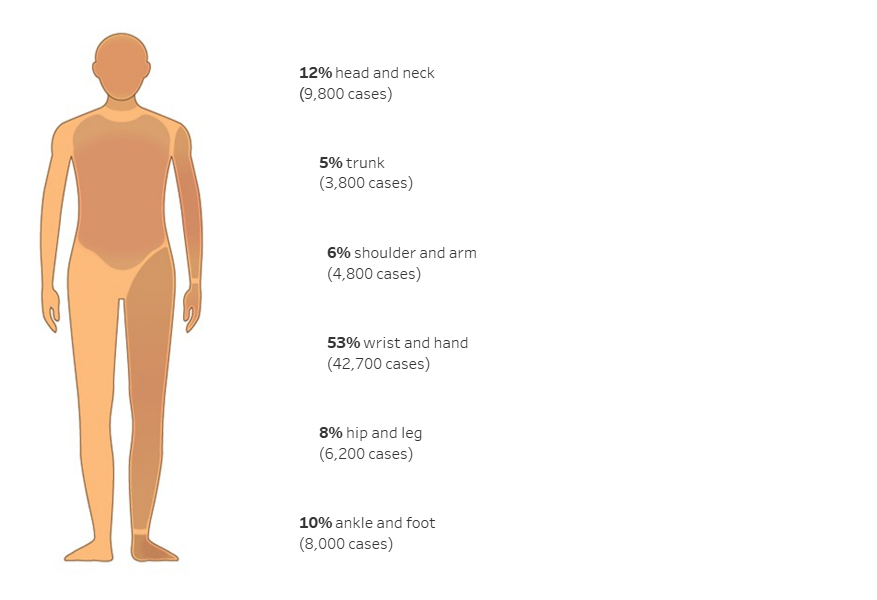This represents 15% of injury hospitalisations and 0.6% of injury deaths. Males were particularly at risk, with a hospitalisation rate 2.7 times as high as females.
Contact with objects (known as Exposure to inanimate mechanical forces in ICD10 coding) includes harmful contact with everyday or industrial objects such as knives, tools, machines, and sports equipment. It also includes unintentional injuries caused by guns and non-heat-related injuries caused by explosions. (For heat-related injuries, see Thermal causes.) Transport accidents are covered in their own category, and so are excluded here.
Hospitalisations where the cause of injury is W44 Foreign body entering into or through eye or natural orifice and the type of injury is a foreign body in the respiratory tract (T17.2–T17.8) were included in this category until the June 2022 release of this report, after which they were re-classified into Choking and suffocation.
This article covers accidental contact with objects. Intentional injuries are included under Intentional self-harm and suicide and Assault and homicide
Objects that cause injury hospitalisations
The most common causes of hospitalisation ;for injuries due to exposure to inanimate mechanical forces fall under the broad categories listed in Table 1.
Table 1: Causes of hospitalisation due to contact with objects, 2021–22Cause | Hospitalisations | % | Rate (per 100,000) |
|---|
Contact with blunt objects such as doors, walls, trees, rocks, and sporting equipment (W20–22) | 20,974 | 26 | 82 |
Contact with knives, glass, and other sharp objects (W25–26) | 20,880 | 26 | 81 |
Contact with tools or machinery (W27–31) | 17,124 | 21 | 67 |
Other or unspecified (W23–24, W32, W34–46, W49) | 20,818 | 26 | 81 |
Total | 79,796 | 100 | 311 |
Notes
- Rates are crude per 100,000 population, calculated using estimated resident population as at 31 December of the relevant year.
- Totals may not equal the sum of the rows due to rounding.
- Codes in brackets refer to the ICD-10-AM (11th edition) external cause codes for hospitalisations (ACCD 2019)
- Injuries relating to foreign body in respiratory tract (W44 + T17.2-T17.8) are now included in the Choking and Suffocation category.
Source: AIHW National Hospital Morbidity Database.
Objects that cause injury deaths
The most common cause of injury death due to exposure to inanimate mechanical forces was contact with blunt objects such as doors, walls, trees, rocks, and sporting equipment (39%) (Table 2).
Table 2: Causes of death due to contact with objects, 2020–21Cause | Deaths | % | Rate (per 100,000) |
|---|
Contact with blunt objects such as doors, walls, trees, rocks, and sporting equipment (W20–22) | 35 | 39 | 0.1 |
Contact with tools or machinery (W27–31) | 23 | 26 | 0.1 |
Caught, crushed, jammed or pinched in or between objects (W23) | 10 | 11 | 0 |
Contact with knives, glass, and other sharp objects (W25–26) | 9 | 10 | 0 |
Other or unspecified (W24, W32–W49) | 13 | 14 | 0 |
Total | 90 | 100 | 0.4 |
Notes
- Rates are crude per 100,000 population,calculated using estimated resident population as at 31 December of the relevant year.
- Totals may not equal the sum of the rows due to rounding.
- Codes in brackets refer to the ICD-10 external cause codes for hospitalisations (WHO 2011).
Source: AIHW National Mortality Database.
Trends over time
Over the period from 2017–18 to 2021–22, the age-standardised rate of hospitalisations due to contact with objects increased by an annual average of 1.1%. From 2012–13 to 2016–17 there was an average annual increase of 2.2%.
There is a break in the time series for hospitalisations between 2016–17 and 2017–18 due to a change in data collection methods (see the Technical notes for details).
For deaths due to contact with objects, the rate decreased over the period from 2011–12 and 2020–21 by an annual average of 0.6% (Figure 1).









